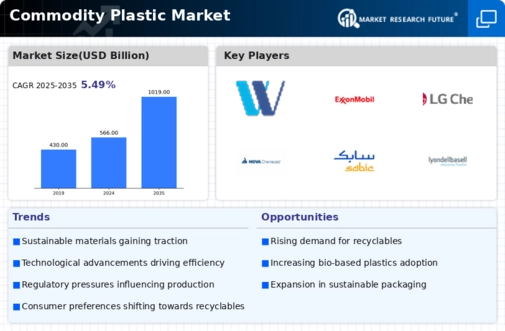Market Analysis
In-depth Analysis of Commodity Plastic Market Industry Landscape
The market dynamics of the commodity plastic market are driven by a combination of factors including supply and demand dynamics, raw material prices, economic conditions, technological advancements, and environmental concerns. Commodity plastics, also known as bulk plastics, are widely used in various industries for packaging, consumer goods, construction, automotive, and electronics applications.
One of the primary drivers of the commodity plastic market is the increasing demand from end-user industries. As populations grow and economies develop, there is a rising need for packaging materials, household products, and construction materials made from commodity plastics. The versatility, affordability, and lightweight nature of commodity plastics make them attractive choices for manufacturers across diverse sectors.
Supply and demand dynamics play a crucial role in shaping the commodity plastic market. The availability of raw materials such as ethylene, propylene, and styrene, which are derived from petroleum or natural gas, directly impacts the production of commodity plastics. Fluctuations in crude oil prices, geopolitical factors, and supply chain disruptions can affect the cost and availability of raw materials, thereby influencing market dynamics.
Economic conditions and trends also influence the commodity plastic market. Economic growth, industrial production, consumer spending, and construction activities impact the demand for commodity plastics. During periods of economic expansion, there is typically higher demand for consumer goods, packaging materials, and construction products, driving the growth of the commodity plastic market. Conversely, economic downturns may lead to reduced demand and lower prices for commodity plastics.
Technological advancements in plastic manufacturing processes contribute to the evolution of the commodity plastic market. Innovations such as polymerization techniques, catalyst technologies, and recycling technologies improve the efficiency, quality, and sustainability of plastic production. Advanced manufacturing processes enable the production of commodity plastics with enhanced properties such as strength, flexibility, and durability, expanding their range of applications and market potential.
Environmental concerns and regulatory standards are increasingly shaping the commodity plastic market dynamics. Growing awareness of plastic pollution and its environmental impact has led to calls for sustainable alternatives and stricter regulations on plastic production and waste management. Governments and organizations around the world are implementing measures to reduce single-use plastics, promote recycling, and encourage the use of biodegradable or renewable plastics. These initiatives influence consumer preferences, market trends, and the development of eco-friendly alternatives in the commodity plastic market.
The competitive landscape of the commodity plastic market is characterized by the presence of numerous manufacturers, suppliers, and distributors operating globally. Key players in the industry invest in research and development, product innovation, and strategic partnerships to maintain their market share and competitive edge. They focus on optimizing production processes, expanding product portfolios, and enhancing customer service to meet the evolving needs of end-users.
Geographically, the commodity plastic market is segmented into regions such as North America, Europe, Asia Pacific, Latin America, and the Middle East and Africa. Asia Pacific dominates the global commodity plastic market due to its large manufacturing base, growing population, and expanding industries. China, in particular, is a major producer and consumer of commodity plastics, driven by its booming economy and extensive manufacturing sector. North America and Europe also have significant markets for commodity plastics, supported by robust industrial and consumer markets.












Leave a Comment